India
China Welcomes Modi’s Positive Remarks on Ties

Contents
Introduction
In recent months, the dynamics of India-China relations have garnered significant attention, particularly due to the positive remarks made by Indian Prime Minister Narendra Modi concerning bilateral ties. This unexpected yet welcome affirmation of friendship and cooperation appears to signal a potential thaw in a historically complex relationship characterized by both collaboration and contention. Modi’s expression of optimism regarding India-China relations comes at a crucial time when both nations have been navigating multilateral forums and addressing various regional challenges.
The backdrop of these developments is critical for understanding the significance of Modi’s statements. Historically, India and China have been intertwined in a relationship marked by both strategic competition and cultural exchanges. While there have been longstanding issues, including border disputes and differing stances on regional security, numerous rounds of diplomatic efforts have been initiated to enhance dialogue and foster cooperation. As both nations continue to balance economic growth and national security, Modi’s positive outlook serves as a reminder of the collaborative potential that exists.
This period of renewed dialogue can be framed within a broader context of shifting geopolitical tensions that have influenced Asian regional dynamics. Both India and China are major players in the Asian continent, and their interactions have far-reaching implications for neighboring countries and global stability. The remarks made by Prime Minister Modi highlight a willingness to explore avenues of cooperation, signaling a prospective shift towards a more constructive engagement. Such developments provide a unique opportunity to deepen mutual understanding and address shared challenges through diplomacy rather than conflict.
Background of India-China Relations
The historical context of India-China relations is steeped in a complex tapestry of cooperation and conflict, with roots extending back thousands of years. The early interactions between these two civilizations included trade exchanges along the Silk Road, fostering cultural ties that laid the foundation for their relationship. However, as the political landscapes evolved, so did the dynamics of diplomatic engagement.
In modern history, the formal diplomatic relationship between India and China was established in 1950, shortly after the Chinese Communist Party came to power. During this time, both nations sought to define their identities as new leaders in Asia, which led to the adoption of the Panchsheel Agreement in 1954. This agreement encapsulated the principles of mutual respect, non-aggression, and peaceful coexistence, reflecting a shared vision for collaboration in the region.
Despite such collaborative efforts, tensions have frequently surfaced, most notably during the Sino-Indian War of 1962, which stemmed from border disputes. This conflict not only strained relations but also created lingering distrust that has persisted over the decades. In the following years, border skirmishes and differing perceptions regarding regional influence led to further complications. The 1990s marked a phase of thawing relations as both countries engaged diplomatically to settle border issues and improve trade, which gradually gained momentum.
In recent years, India and China have sought to engage in bilateral dialogues and forums, recognizing that both countries influence the economic and strategic landscape of Asia. Nonetheless, challenges remain, including competition for regional dominance and differing stances on national security issues. The relationship, characterized by its complexities, continues to evolve, illustrating that while collaboration is possible, historical grievances and geopolitical aspirations continue to shape the interactions between India and China.
Modi’s Remarks: What Was Said
In a recent address, Indian Prime Minister Narendra Modi articulated a series of positive remarks aimed at strengthening bilateral ties between India and China. Modi emphasized the importance of dialogue as a means of resolving outstanding issues and fostering closer cooperation. He stated, “India and China must work together to create an atmosphere of mutual respect and understanding,” underscoring the need for both nations to engage constructively in discussions regarding their complex relationship.
The Prime Minister’s emphasis on mutual respect was notable, as he recognized the historical context that shapes the interactions between the two nations. By invoking themes of collaboration and shared prosperity, Modi suggested that both India and China hold key responsibilities not only toward each other but also toward regional stability and peace. He remarked, “Our destinies are intertwined, and our cooperation can bring about significant benefits for both peoples,” thereby highlighting the interconnected nature of the two economies.
Furthermore, Modi’s remarks included an affirmation of China’s pivotal role in global affairs. He noted that “as two of the largest economies in Asia, it is imperative that we lead by example in promoting a sustainable and inclusive growth model.” This acknowledgment of China’s influence reflects a strategic pivot in India’s approach to its neighbor, suggesting a willingness to cultivate a partnership rather than viewing China solely through the lens of rivalry.
The implications of Modi’s statements could be profound, potentially paving the way for enhanced diplomatic engagements that may mitigate tensions in the region. As both countries grapple with various challenges, Modi’s positive outlook could serve as a catalyst for increased cooperation in areas such as trade, security, and environmental concerns, thus reinforcing the idea that constructive dialogue is essential for fostering long-term peace and stability in Asia.
China’s Response to Modi’s Remarks
In recent days, China’s government has officially responded to Indian Prime Minister Narendra Modi’s positive comments regarding bilateral ties, viewing them as a constructive foundation for enhanced cooperation. Chinese government spokespersons have emphasized that Modi’s remarks signify an opportunity to foster meaningful dialogue and collaboration in various sectors, including trade, technology, and regional security.
The Chinese Ministry of Foreign Affairs acknowledged the significance of Modi’s statements, expressing a willingness to engage in discussions that could lead to mutual benefits for both nations. The spokesperson highlighted the historical relationship between India and China, underscoring the shared interests that can be leveraged for regional stability and economic growth. Additionally, China’s state-run media echoed these sentiments, framing Modi’s remarks as a step towards strengthening the partnership between the two nations.
Media coverage in China has largely focused on the potential for revitalizing the relationship following a period of tension. Analysts have noted that Modi’s affirmative comments could pave the way for high-level meetings aimed at addressing outstanding issues. The prevailing sentiment is that China welcomes collaborative opportunities with India, considering both nations as pivotal players in Asia and beyond.
Furthermore, Chinese officials have called for enhanced communication channels to resolve disputes amicably and to work jointly toward economic initiatives that could yield substantial results for both economies. The tone of Chinese media has leaned towards optimism, underlining the necessity of establishing a framework for continuous engagement. By doing so, China aims to build a harmonious China-India relationship, which it views as beneficial not only to the two countries but also to global peace and development.
Importance of Diplomatic Engagement
Diplomatic engagement between India and China is of paramount significance, particularly when addressing the myriad regional challenges that both nations face. Border disputes, fluctuating trade relations, and the intricacies of international alliances necessitate an ongoing dialogue, one that fosters better understanding and cooperation. In recent years, the complex geopolitical landscape has often placed these two formidable nations at odds; yet, it is through robust diplomacy that they can navigate these turbulent waters successfully.
The long-standing border disputes between India and China highlight the necessity of diplomatic channels. Open communication is essential to reducing misunderstandings and managing tensions that can escalate into conflict. Through diplomatic engagement, both nations can seek resolutions that honor mutual interests and security, thereby stabilizing the region. The importance of diplomacy extends beyond mere confrontation resolution; it also involves proactively addressing underlying issues that contribute to friction.
Moreover, trade relations between India and China significantly impact their respective economies, making mutual dialogue increasingly vital. As two of the largest economies in Asia, successful economic partnerships can yield great benefits for both sides. Navigating tariff barriers, trade imbalances, and investment opportunities through diplomatic efforts can enhance trust and cooperation. A collaborative economic environment can further mitigate tensions, transforming competitive postures into cooperative strategies.
Additionally, the influence of international alliances underscores the need for continued diplomatic engagement. Within the context of rising global competition, India and China must consider their bilateral relations with other countries and regional organizations. Collaborative efforts in multilateral forums can lead to shared goals and promote peace in the Asia-Pacific region. Ultimately, consistent diplomatic engagement can serve as a foundation for not just resolving conflicts but also fostering long-term cooperation.
Economic Implications of Improved Ties
The recent positive remarks made by Indian Prime Minister Narendra Modi concerning India-China relations highlight a significant opportunity for enhanced economic collaboration between these two nations. With both countries being major players in the global economy, improved ties can lead to numerous economic benefits on both sides. The prospect of increased trade represents a primary area for growth, as both nations can leverage their strengths to create mutually beneficial arrangements. For instance, India’s burgeoning technology sector can complement China’s manufacturing capabilities, paving the way for joint ventures that can innovate and reduce costs.
The bilateral trade between India and China has been substantial, but it currently remains unbalanced, primarily favoring China. Improved diplomatic relations could provide a framework to address existing trade imbalances, allowing for more equitable trade agreements that benefit both economies. Further collaboration in sectors such as telecommunications, pharmaceuticals, and renewable energy can enhance economic ties and drive growth. The potential for technology exchange and collaborative research initiatives is vast, particularly in green technologies, which are increasingly crucial as both countries face environmental challenges.
Moreover, infrastructure development is another promising area of collaboration. China’s Belt and Road Initiative (BRI) aims to increase connectivity across Asia and beyond, while India has its own infrastructure aspirations. Through cooperation, both nations can work towards creating a comprehensive framework that fosters investment in infrastructure projects beneficial to economic growth. This partnership could not only result in better infrastructure but also create jobs and enhance regional trade efficiency.
As these two major economies explore the possibilities of improved relations, both countries stand to benefit significantly from enhanced economic exchanges. By focusing on trade, investment, and collaboration in key areas, they can build a long-lasting partnership that propels each nation toward greater prosperity.
Regional Stability and Security Concerns
The recent remarks made by Indian Prime Minister Narendra Modi regarding the strengthening of India-China relations hold significant implications for regional stability and security in Asia. As two of the largest countries in the region, their relationship plays a pivotal role in shaping the geopolitical landscape, influencing not only bilateral interactions but also the dynamics involving neighboring countries. Enhanced ties between India and China may foster a more balanced power structure within Asia, potentially discouraging unilateral actions by either nation that could destabilize the region.
Improved communication and collaboration between India and China could alleviate tensions stemming from long-standing border disputes and differing national interests. This rapprochement may lead both nations to focus on shared challenges, such as economic development and transnational security threats, including terrorism and cyber warfare. Notably, the commitment to dialogue and cooperation may also inspire other countries in the region to pursue similar measures, contributing to a collective effort towards peace and stability.
However, the complexities of regional security must also be acknowledged. Neighboring nations may remain cautious about India-China rapprochement due to historical rivalries and existing alliances that influence their foreign policy decisions. For instance, countries like Pakistan may perceive a strengthening partnership between India and China as a potential threat, prompting them to recalibrate their own security strategies. Similarly, the involvement of other global powers, such as the United States and Russia, serves to further complicate the security architecture in the Asia-Pacific region.
In light of these factors, the importance of Modi’s positive remarks cannot be understated. They signal a willingness to engage in constructive dialogue, which is crucial for ensuring that regional stability is preserved and security concerns are adequately addressed. The evolving relationship will require careful navigation to ensure that it cultivates a peaceful environment conducive to mutual prosperity for India, China, and their neighbors.
Public Perception in India and China
The recent diplomatic engagement between India and China, marked by Prime Minister Narendra Modi’s positive remarks, has elicited varied public sentiment in both nations. In India, Modi’s comments were generally perceived as a move towards enhancing bilateral ties, fostering optimism about the potential for improved relations. Many Indian citizens view this engagement as a strategic necessity, given the geopolitical complexities in the region. However, there remains a portion of the population that harbors skepticism, influenced by historical tensions and border disputes. This ambivalence illustrates a nuanced public perception that balances hope for future collaboration with caution rooted in past conflicts.
Also read : A Diplomatic Encounter: Rahul Gandhi and New Zealand PM Christopher Luxon
Conversely, in China, the public’s response to Modi’s remarks also reflects a complex dialogue. Many citizens welcomed the initiative as a positive step towards strengthening economic partnerships and regional stability. Chinese media has largely depicted Modi’s statements as an acknowledgment of the importance of Sino-Indian relations, promoting a narrative of cooperation. However, there is significant public awareness of the challenges that lie ahead, primarily stemming from unresolved issues on territorial disputes and differing national interests. Such factors contribute to a mixed sentiment, where enthusiasm for potential cooperation coexists with a recognition of historical grievances.
Both populations, influenced by their respective media portrayals and national narratives, display a collective desire for peace and collaboration despite the lingering shadows of discord. The complexities surrounding public sentiment highlight the critical role of communication and diplomacy in shaping how citizens perceive international relations. Ultimately, fostering an environment in which cooperative discourse can thrive is essential for mending the rift between these two nations. By engaging with one another thoughtfully and respectfully, India and China might pave the way for a more harmonious future.
Conclusion and Future Prospects
In recent months, the dialogue between China and India has garnered significant attention, particularly in the wake of Prime Minister Narendra Modi’s positive remarks regarding bilateral relations. These comments reflect a pivotal shift towards fostering a more cooperative atmosphere in a complex geopolitical landscape. Both nations, which represent two of the most populous countries in the world, have long shared a contentious history, marked by disputes and divergent strategic interests. However, Modi’s optimism suggests a possible turning point, highlighting the potential for deeper engagement and understanding.
The discussions throughout this blog post underscore the necessity for continued diplomatic efforts that prioritize communication and collaboration. As both nations navigate challenges such as regional security, trade, and climate change, there exists an opportunity to build trust through sustained dialogue and mutual respect. Experts have indicated that such diplomatic initiatives can pave the way for constructive outcomes, potentially leading to joint projects and agreements that benefit both populations.
Moreover, the emphasis on economic collaboration cannot be overstated. With Modi’s focus on enhancing trade ties, there is potential for heightened economic interdependence, which can serve as a stabilizing factor in the relationship. Additionally, addressing historical grievances with a forward-looking approach could lead to a redefined partnership, fostering a climate in which both nations can thrive.
In conclusion, the prospects for India-China relations hinge upon the willingness of both countries to embrace a spirit of cooperation. With Modi’s positive remarks as a foundation, future diplomatic engagements could indeed transform longstanding rivalries into constructive partnerships. Recognizing the mutual benefits that arise from collaboration could ultimately pave the way for a more peaceful and prosperous future for both nations.
Accident
CM Rekha Gupta Orders Probe into Building Collapse in North-East Delhi, DM to Submit Detailed Report
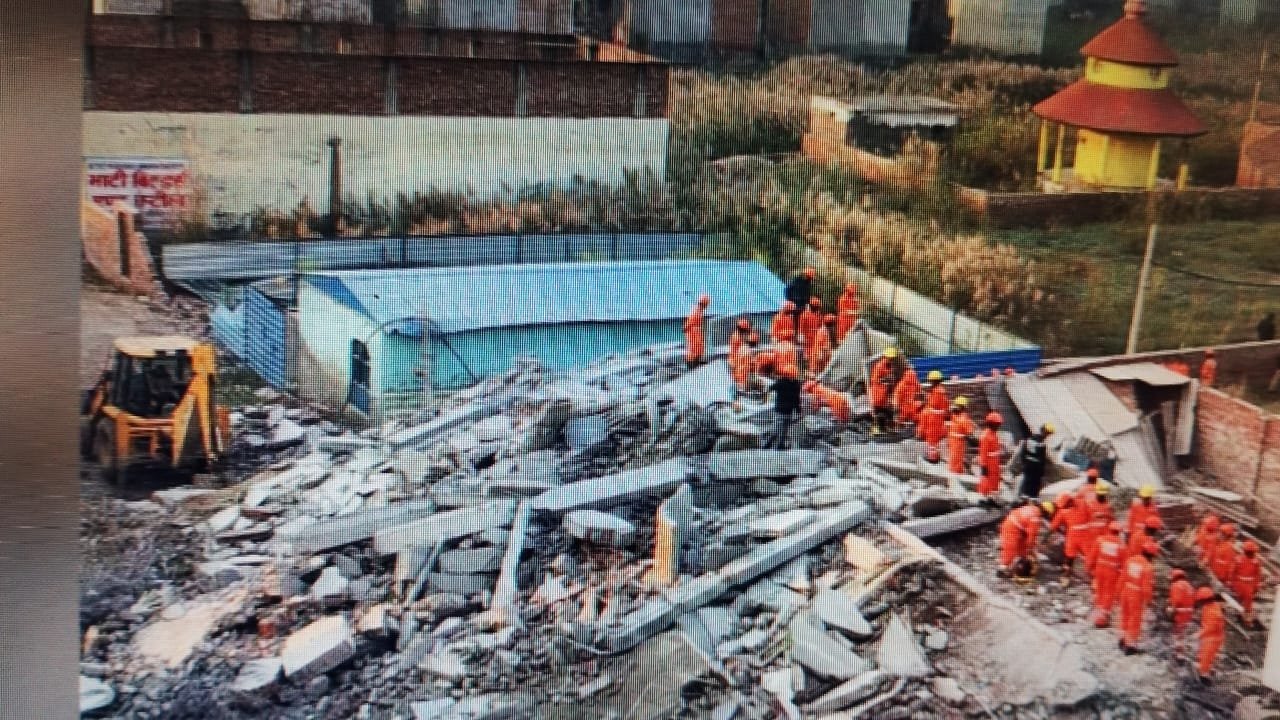
Contents
New Delhi, July 12, 2025
A tragic building collapse in the Karawal Nagar area of North-East Delhi on Saturday sent shockwaves through the region. The multi-storey structure crumbled suddenly, leaving several people injured, while a few are still feared trapped under the debris. Rescue and relief operations are currently underway at full speed.
Taking immediate note of the incident, Delhi Chief Minister Rekha Gupta has ordered a high-level investigation and directed the District Magistrate (DM) to submit a detailed report within 48 hours. Speaking to the media, she said, “Strict action will be taken against anyone found responsible for this tragedy. There can be no compromise when it comes to public safety.”
Administration Swift in Relief Operations
Teams from the NDRF and Fire Department reached the site promptly and are working tirelessly to clear the rubble. According to local residents, the building had visible cracks for quite some time, but no significant action was taken in advance.
Questions Raised Over Illegal Constructions
This incident has once again raised serious concerns about unauthorized constructions and alleged corruption in the building permit system in Delhi. The Chief Minister emphasized the need for stricter ground-level enforcement. “It’s time for the administration to act firmly against illegal structures and ensure accountability at the ward level,” she asserted.
Support and Compensation for Victims
The Delhi government has announced that it will bear the full cost of treatment for those injured in the incident. Compensation procedures for the families of the deceased have also begun. CM Rekha Gupta personally visited the hospital to meet the injured and instructed doctors to provide special care.
India
Wave of Employment Across India: Job Fairs Held in 47 Cities, 51,000 Youths Receive Appointment Letters
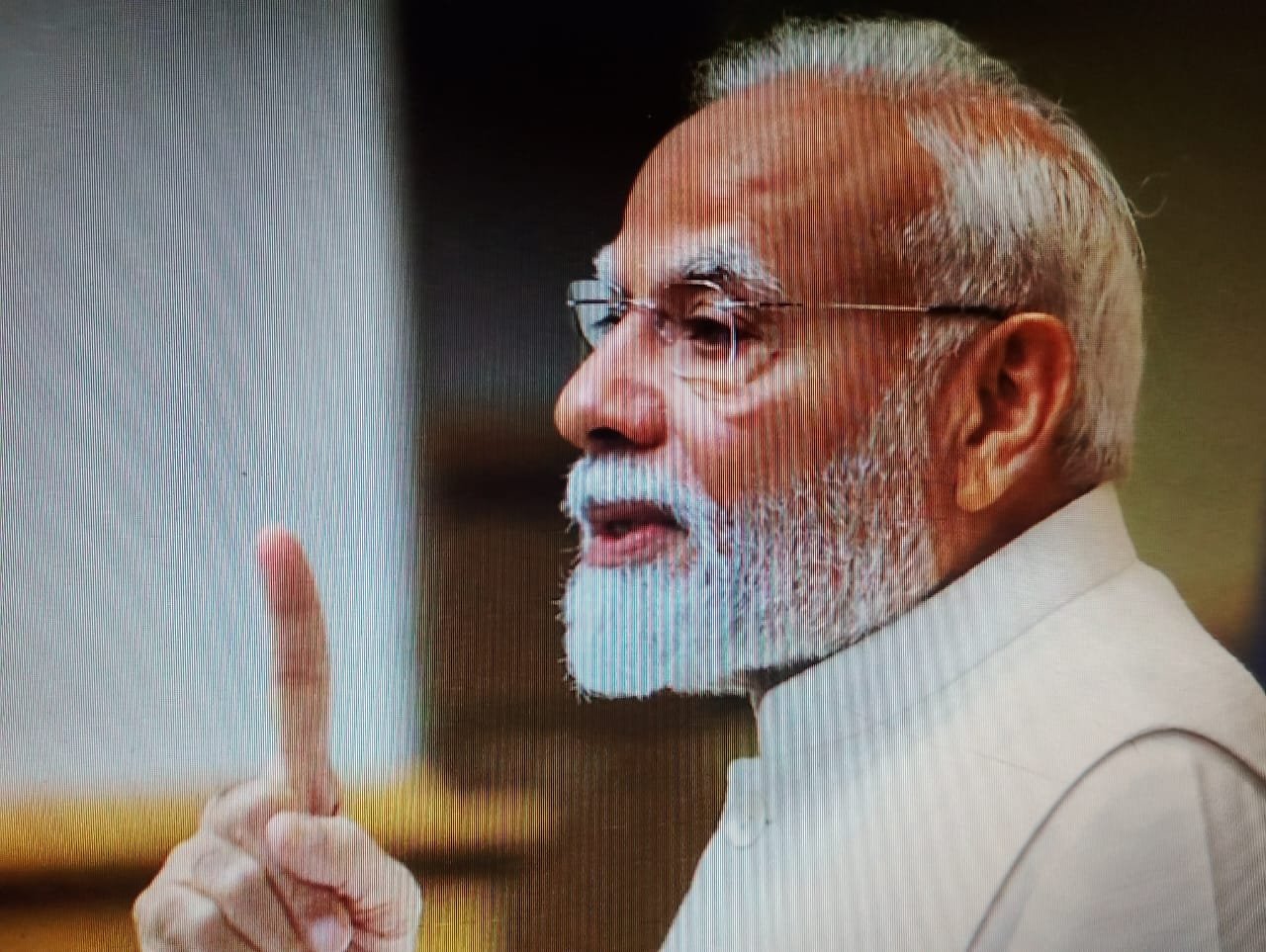
Contents
New Delhi, July 12, 2025
Saturday morning brought new hope for the youth of India as Prime Minister Narendra Modi, through video conferencing, virtually participated in employment fairs held across 47 cities and distributed over 51,000 appointment letters to newly selected candidates. These weren’t just ordinary documents—they symbolized the first step toward the dreams of thousands of young Indians, ready to build their own future.
“No Recommendations, No Bribes” — Jobs Now Based Solely on Merit
Addressing the event, Prime Minister Modi emphasized the government’s commitment to a transparent, fair, and efficient recruitment process.
“Today, jobs in India are no longer handed out through influence or favors, but through talent. This is the identity of the New India,” said PM Modi.
He further reiterated that young aspirants no longer need backing or bribes to secure government jobs. The government’s “No Recommendation, No Expense” initiative reflects this very principle.
Confidence Shines on Young Faces
One of the selected candidates from Jaipur, Rajasthan, Miss. Sharma, shared her experience with visible emotion:
“I never thought I’d get a government job without any connections or under-the-table payments. This government has made that possible. I can now see the dreams of my family shining in their eyes—and mine.”
Youth Power Will Build the Nation
The Prime Minister urged the newly recruited youth to treat their roles not just as jobs, but as opportunities for nation-building.
- “Wherever you are posted, your dedication and work ethic will shape the future of the country,” he said.
Art
Orange Day Adds a Splash of Joy at DAV Centenary Public School, Jaipur
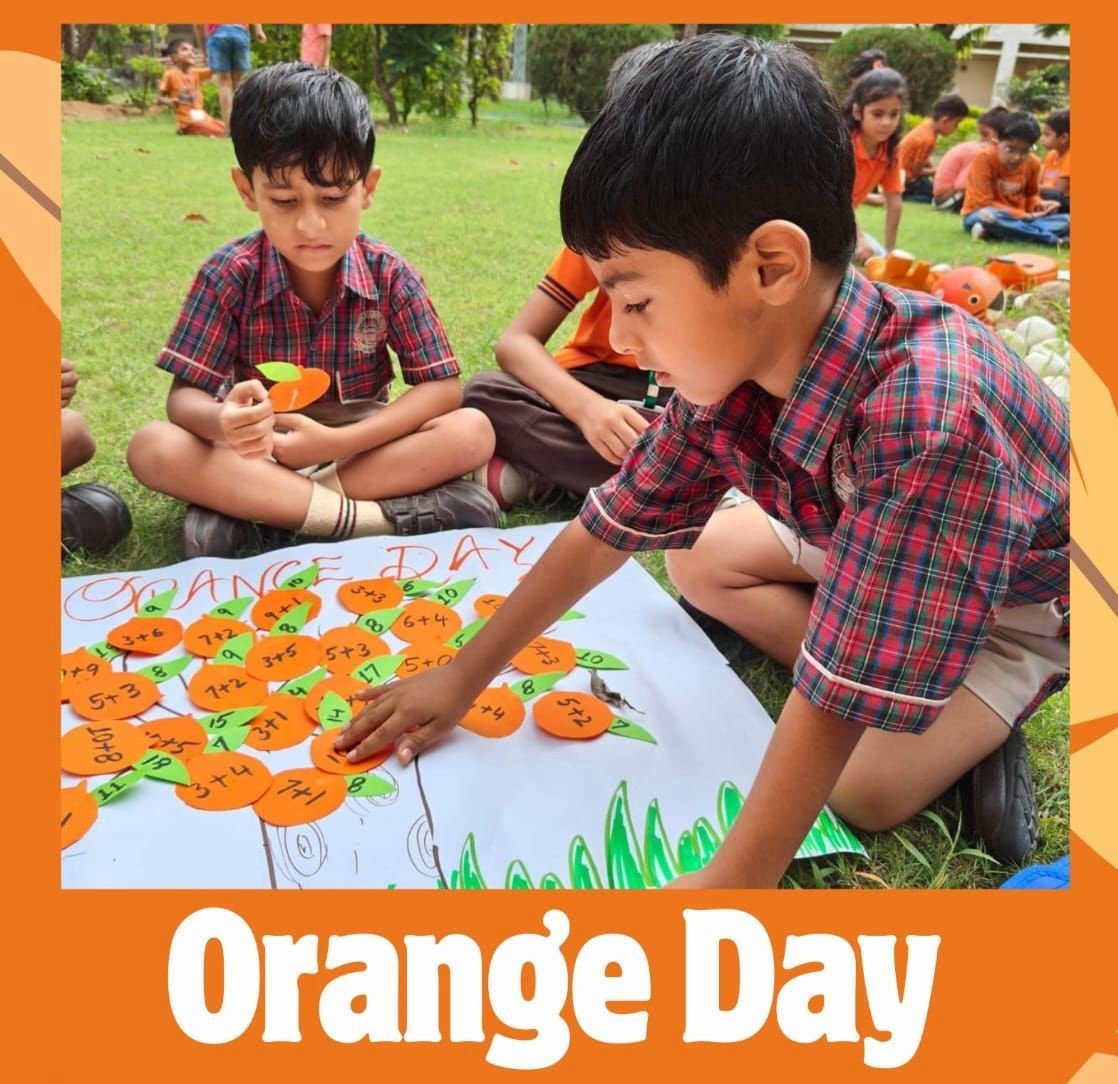
Jaipur, July 10, 2025
The tiny tots of DAV Centenary Public School, Jaipur lit up the campus as they came dressed in cheerful shades of orange to celebrate Orange Day with great excitement and enthusiasm.
The pre-primary wing turned into a lively sea of orange—from clothes and accessories to creative decorations—all reflecting the spirit of joy, creativity, and energy that the colour symbolizes. Teachers thoughtfully planned the day to help children not just enjoy, but also learn the meaning behind the colour orange—a symbol of hope, enthusiasm, and prosperity.
The classrooms were buzzing with laughter and activity as the little learners took part in various fun-filled games, storytelling, drawing, and creative expression sessions. To boost their communication skills, each child was encouraged to bring an orange-coloured object from home and speak a few lines about it in front of their classmates. For many, it was their first public speaking moment, and they did it with adorable confidence.
Principal Mr. A.K. Sharma visited the classrooms to cheer on the children. He appreciated the thoughtful planning of the teachers and said, “Activities like these help children build confidence, express themselves freely, and connect learning with real-life experiences.”
It was a delightful sight to watch the little ones bursting with curiosity, dressed in glowing orange, exploring and expressing themselves. The day left behind not just smiles and laughter, but also a colourful memory in the hearts of the young students.
Accident
Vadodara Bridge Tragedy: Death Toll Rises to 19, Two Still Missing – Rescue Operations Continue in Mahisagar River
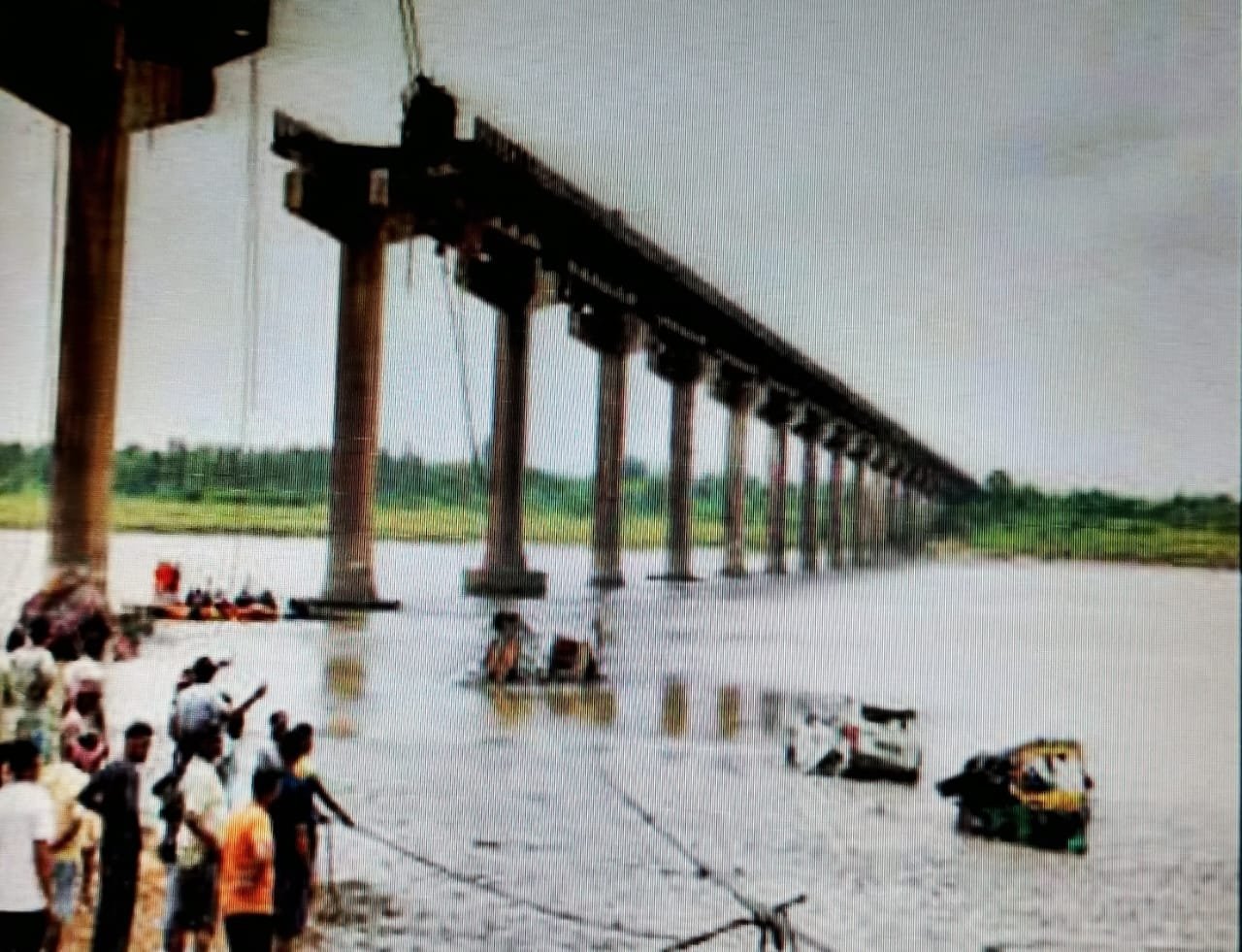
Contents
Vadodara (Gujarat), July 11, 2025
A heart-wrenching incident has shaken Gujarat as the Gambhira–Mujpur bridge over the Mahisagar River in Vadodara district collapsed unexpectedly. So far, 19 people have lost their lives, while 2 individuals remain missing. Rescue teams have been relentlessly working for the third consecutive day in the hope of saving lives and retrieving the missing.
How Did the Tragedy Happen?
The incident occurred on the morning of July 9, when several vehicles were crossing the bridge. Suddenly, a major section of the bridge collapsed into the river, dragging with it two trucks, an SUV, a pickup van, an auto-rickshaw, and two motorcycles. The bridge was nearly 40 years old, and multiple complaints had been made about its deteriorating condition.
Victims Identified, Families Devastated
So far, 18 bodies have been recovered from the debris, while one critically injured person succumbed to injuries at the hospital, taking the total death toll to 19. Among the victims were women, children, and entire families who were out on a pilgrimage for Guru Purnima.
Search Operations Still Underway
Rescue efforts by NDRF, SDRF, and fire brigade teams are still ongoing. The operation is facing major challenges due to the river’s depth, strong current, and over 10 feet of thick mud, making it difficult to access submerged vehicles. Cranes, boats, and divers are being deployed to find the two missing persons.
Government Response and Action
In the wake of the incident, the state government swiftly suspended four engineers and has ordered a detailed investigation into the bridge collapse. The government has also announced financial compensation of ₹2 lakh to the families of the deceased and ₹50,000 for the injured.
Public Outrage and Unanswered Questions
Local residents claim the bridge was already in a dangerous condition, but authorities failed to take timely action. Media reports reveal that just days before the tragedy, a journalist had posted a video highlighting the poor state of the bridge, which went ignored.
This incident has once again exposed the negligence and oversight in maintaining public infrastructure. Behind every number is a grieving family – a shattered home, a mother who lost her child, a father never to return. The need of the hour is strict accountability, immediate structural audits, and long-term corrective measures — so that such a tragedy never repeats itself.
Education
Guru Purnima Celebration at DAV CPS, Jaipur – A Heartfelt Tribute to Guiding Lights
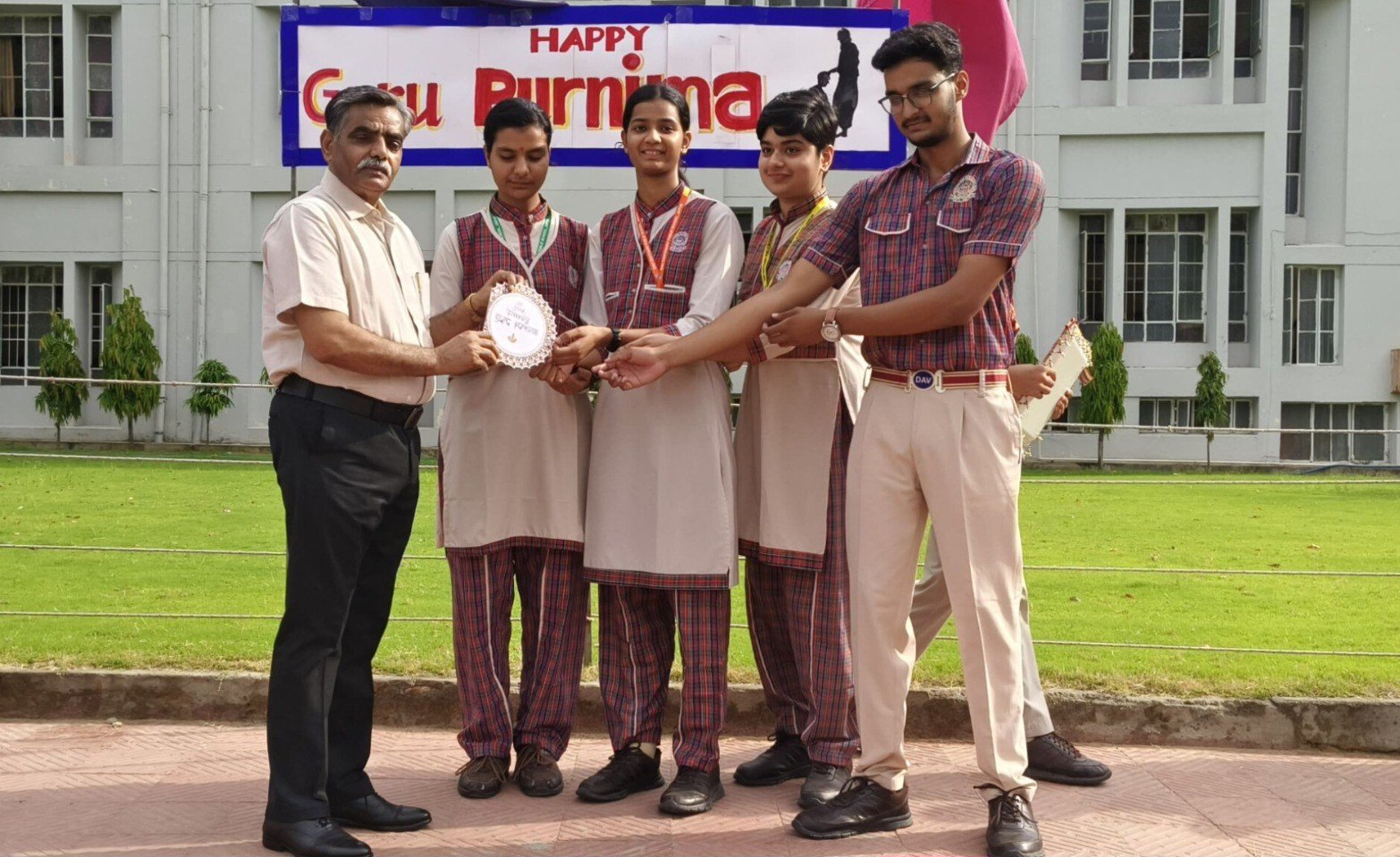
Jaipur | July 10, 2025
In an atmosphere filled with devotion, gratitude, and inspiration, DAV Centenary Public School, Vaishali Nagar, Jaipur celebrated Guru Purnima with heartfelt enthusiasm on Thursday, July 10. The event turned out to be more than just a celebration—it was a beautiful expression of love and respect for the teachers who illuminate the path of learning for their students.
The morning assembly set the tone for the day with the soothing sounds of shlokas dedicated to gurus, creating a spiritually charged environment across the campus. The essence of the celebration was beautifully captured in a speech that explained the cultural and historical roots of Guru Purnima, reminding everyone of the powerful legacy of the guru-shishya tradition.
Students poured their hearts out through soulful poems, melodious songs, and inspiring speeches, each echoing a shared sentiment—deep respect for their mentors. A mesmerizing classical dance performance, portraying devotion and reverence towards gurus, stole the spotlight and left the audience spellbound.
One of the most touching moments of the day was when the students presented a handmade gratitude card to Principal Mr. A.K. Sharma, who has been a constant source of wisdom and encouragement. In his address, Mr. Sharma reflected on the irreplaceable role of teachers in shaping young minds and urged students to stay rooted in values, discipline, and lifelong learning.
“The presence of a guru in one’s life is a blessing,” he said. “True success comes not just from knowledge, but from the humility to keep learning.”
The event concluded on a thoughtful note, leaving everyone—teachers, students, and staff—feeling more connected, more thankful, and more inspired. Guru Purnima at DAV CPS was not just an event, but an experience that reminded all of the timeless role of a teacher—not just in the classroom, but in life.
Crime
Indian Nurse to Be Hanged in 6 Days in Yemen — The Heartbreaking Story of Nimisha Priya, Who Gave Her Partner a Sedative That Turned Deadly
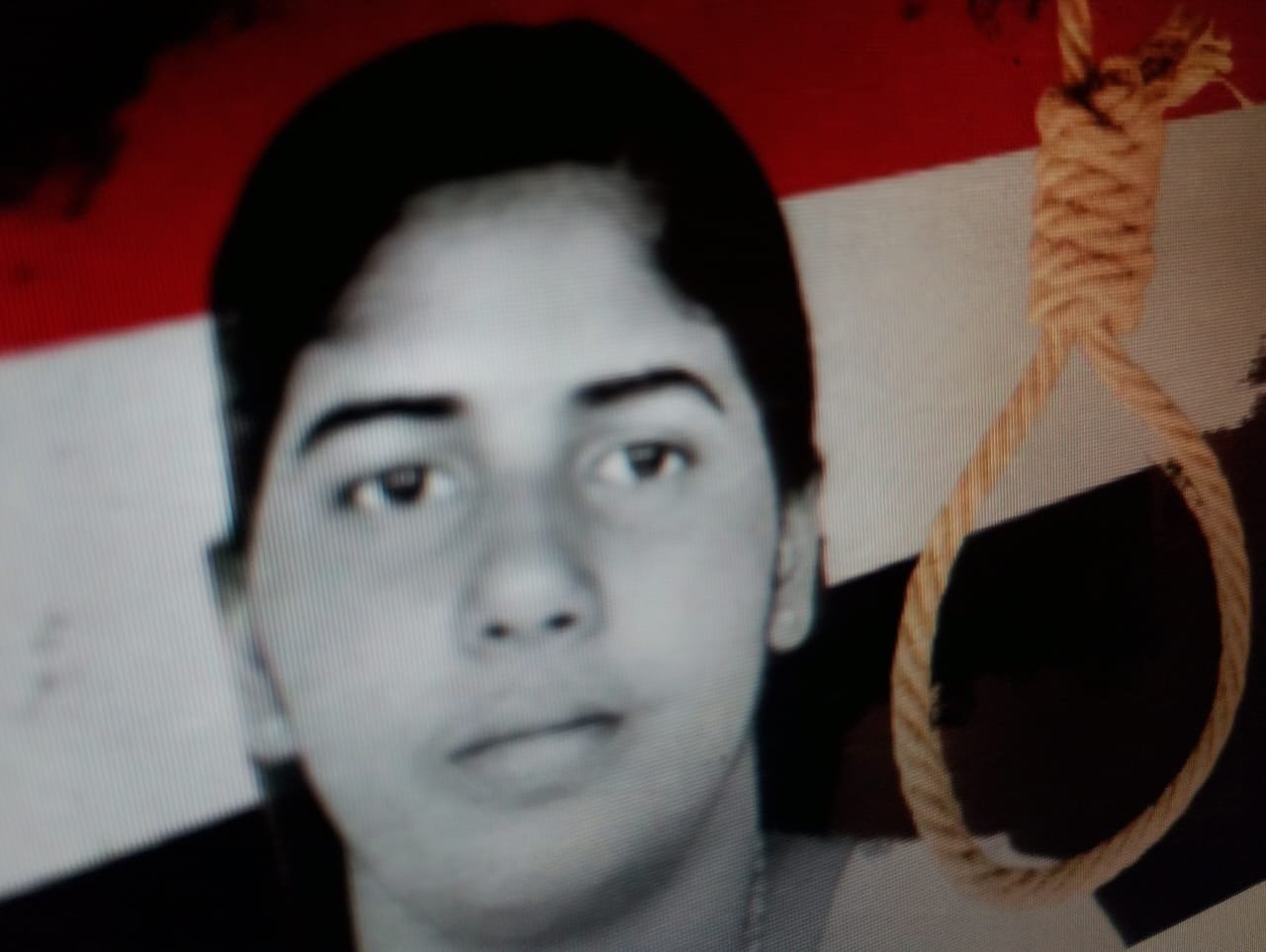
Contents
Thiruvananthapuram / Yemen | July11, 2025
Once a hopeful young nurse from Kerala, Nimisha Priya is now counting her final days in a Yemeni prison. Her crime — administering a sedative that led to the death of her Yemeni business partner, Alkhader Al-Omari. Her punishment — execution by hanging on July 13, 2025.
But behind this grim sentence lies a story much more complicated — one filled with ambition, control, fear, and a moment that changed everything.
A Nurse with Dreams, and a New Life Abroad
Nimisha Priya wasn’t a criminal when she left India. She was a caregiver — a skilled nurse with dreams of building a better life. In Yemen, she found work, opened a clinic, and partnered with Alkhader Al-Omari, a local man who helped her navigate the foreign land.
But what started as a partnership slowly turned into a prison.
Trapped in a Toxic Relationship
Reports from the time suggest that Al-Omari soon took control of more than just the clinic. He allegedly confiscated Nimisha’s passport, isolated her, and began mentally and physically abusing her. He took over her earnings and threatened her when she talked about returning home to India.
Far from family, friends, or legal protection, Nimisha felt completely trapped — her life and freedom in the hands of a man who, she believed, would never let her go.
The Night It All Changed
Then came that fateful night in 2017.
According to court documents, Nimisha gave Al-Omari a high dose of a sedative. Her stated intention was not to kill him, but to make him unconscious, retrieve her passport, and escape. But the sedative proved too strong — Al-Omari died.
Panic set in. Nimisha reportedly dismembered his body and tried to hide the evidence in a water tank. A gruesome and desperate act that, once discovered, left her no room to explain.
A Death Sentence, and a Race Against Time
The Yemeni court ruled the act pre-meditated murder and sentenced Nimisha to death by hanging.
For years, legal teams in India and Yemen pleaded for clemency. Activists pointed to the abuse she suffered, to the desperation of a woman with no escape, and to her otherwise clean record. Her mother, in tears, begged the Yemeni family for forgiveness, hoping for a “Diya” — blood money — a custom in Yemen that allows the victim’s family to pardon the accused.
But that pardon never came.
Only Six Days Left…
Today, Nimisha Priya is a prisoner not just behind bars, but in time. With just six days left, she awaits her execution. Her mother is still trying — hoping against hope — for one final miracle.
Meanwhile, millions in India are asking:
Was she a murderer? Or a victim of circumstance, trying to survive in a world where no one came to help?
Beyond the Verdict
This is not just Nimisha’s story. It’s the story of thousands of Indian women who work abroad, often with little protection. It’s the story of how desperation can drive someone to the edge, and how the law — especially in foreign lands — rarely leaves room for the grey in between.
Crime
India’s Biggest Scam You Never Heard Enough About — ₹49,000 Crore Vanished, 5 Crore Lives Shattered, And Now… One Big Arrest
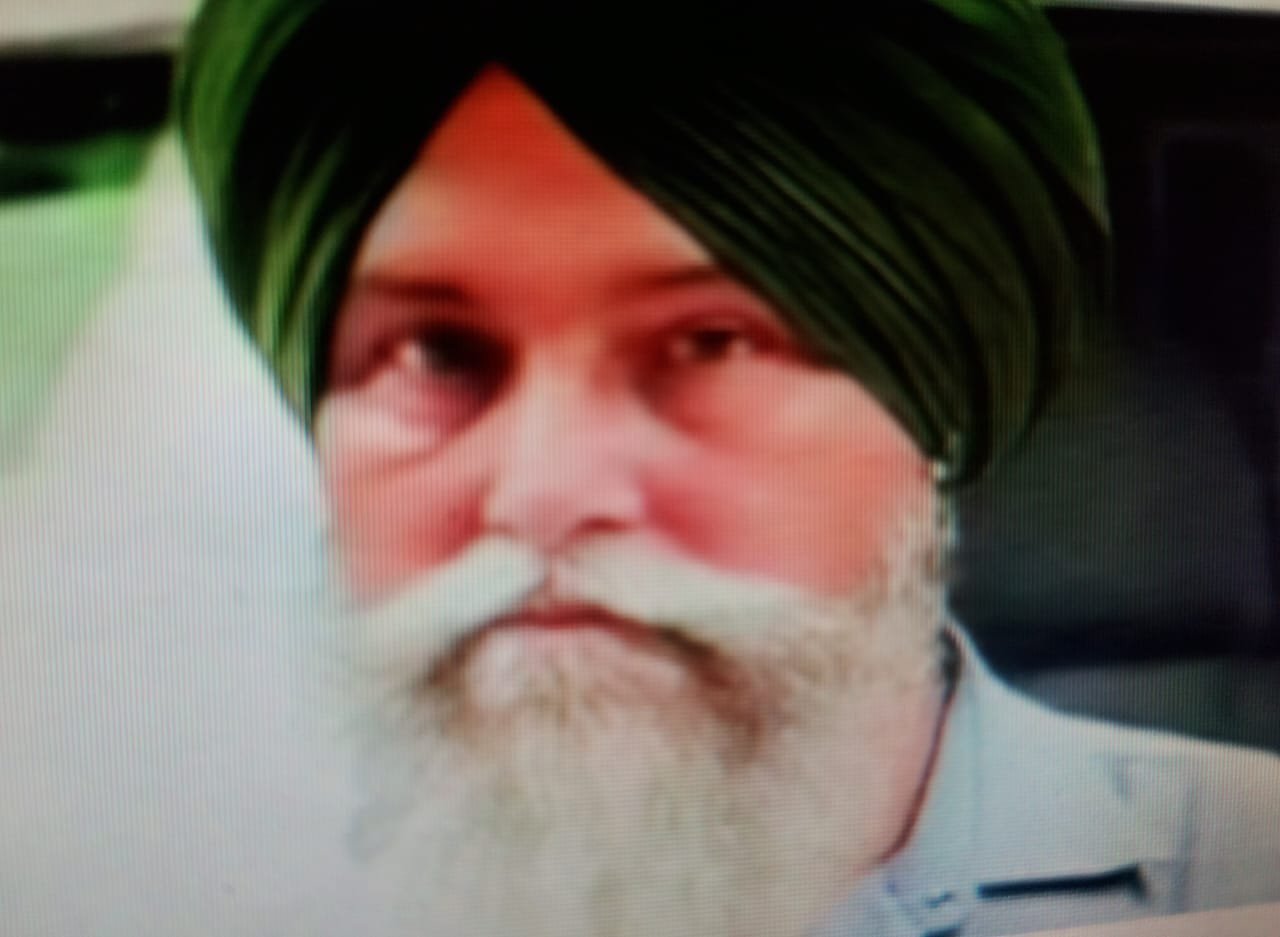
Contents
Lucknow | July 11, 2025
In what could be one of the biggest financial frauds in India’s history, the curtain has finally started to lift. The Uttar Pradesh Economic Offences Wing (EOW) has arrested Gurnam Singh (69) — the key director behind Pearls Agrotech Corporation Ltd (PACL) — from Punjab’s Ropar district.
His crime? Allegedly orchestrating a ₹49,000 crore Ponzi scheme that duped nearly 5 crore investors across India.
This wasn’t just about money. It was about dreams sold and lives broken — mostly belonging to farmers, small shopkeepers, daily wage workers, and middle-class families who trusted PACL with their hard-earned savings.
The Dream That Turned Into a Trap
PACL promised affordable land investments. The plan sounded simple — invest now, and in a few years, you’d either get a valuable land parcel or high returns.
But behind the glittering promises lay a hollow scam.
No land. No returns. Just a web of false paperwork and delayed answers — until one day, even those stopped.
EOW’s New Face — Tough, Accountable, and On a Mission
What’s changed now? The UP EOW has introduced a “Reward and Punish” system to fast-track major financial crime probes like this:
- Monthly performance tracking of officers
- Fast-track teams deployed in every district
- Seizure of properties under Section 111 of the new BNS law
- Helplines, awareness drives, and social media alerts for public support
This new system has already led to 14 arrests, including key names linked to the ₹250 crore V-Care scam and this massive PACL fraud.
This Isn’t Just About Money — It’s About Betrayal
One woman investor said it best:
“We saved for our children’s education, for their future. Now we run around courts and collector offices, with nothing to show for it.”
Behind every number in this scam — there’s a family. A broken promise. A shattered future.
The Bigger Picture
This arrest proves one thing: Justice may be slow, but it’s not blind. ₹49,000 crore didn’t just disappear — it was siphoned off through trust and illusion. The real question now is:
Will India’s legal system bring back justice and money for 5 crore defrauded citizens? Or will this case too fade into the dust of files and forgotten hearings?
India
India Crosses 1.46 Billion — But Why Are People Having Fewer Children? UN Report Reveals the Changing Math of Population

Contents
New Delhi | July11, 2025
There was a time when India’s growing population was considered the country’s biggest problem. Slogans like “Hum Do, Hamare Do” (We Two, Our Two) echoed across walls and radio channels. But times have changed — and so has the narrative.
According to the latest report by the United Nations, India’s population has officially crossed 1.46 billion, making it the most populous nation on the planet. But what’s surprising is this: India’s fertility rate — the number of children a woman has — is steadily declining.
Today, the average Indian woman is giving birth to just two children, which is right around the replacement level needed to maintain a stable population.
So, if fewer children are being born, why is the population still rising? What’s really happening behind these numbers?
This Isn’t Just About Statistics — It’s a Social Shift
There was a time when India was labelled a “population bomb.” Now, several Indian states — including Kerala, Delhi, Tamil Nadu, Karnataka, and Punjab — have fertility rates below replacement level.
This isn’t happening due to force or law — but through education, awareness, and personal choice. It’s a quiet revolution led by society itself.
India is now slowly moving towards population stability, something once thought to be decades away.
Women Are Leading This Change
Behind these shifting numbers is a bigger story — the story of India’s changing women:
- They’re more educated
- They’re joining the workforce
- They’re marrying later
- And they’re making thoughtful, conscious decisions about motherhood
Children are no longer just a tradition — they’re a planned responsibility.
India’s Population Will Peak by 2060 — Then Begin to Decline
Experts say this population growth is the result of demographic momentum — a situation where the current large number of young people continues to reproduce, even as fertility falls.
But once this momentum slows, India’s population will gradually start to decline — marking the beginning of a new era.
That means: the country that is the youngest today may one day become one of the oldest nations in terms of age demographics.
The Real Question Now: What Will We Do With So Many People?
- Can we create enough jobs for all?
- Will our education and healthcare systems be able to handle the pressure?
- And when the population begins to shrink, who will take care of the elderly?
India now needs smart policies, not just to control numbers — but to improve the quality of its population. Because in the long run, it’s not just about how many people we have, but what those people can do.
The Population Game Has Changed
This UN report isn’t just another document filled with stats — it’s a signal that India is entering a new demographic era.
The country is slowly shifting its focus from “how many” to “how capable” — and that’s where real progress begins.
Crime
Shocking Crime in Gurugram: Rising Tennis Star Radhika Yadav Shot Dead — Father Pulls the Trigger Over Career Dispute
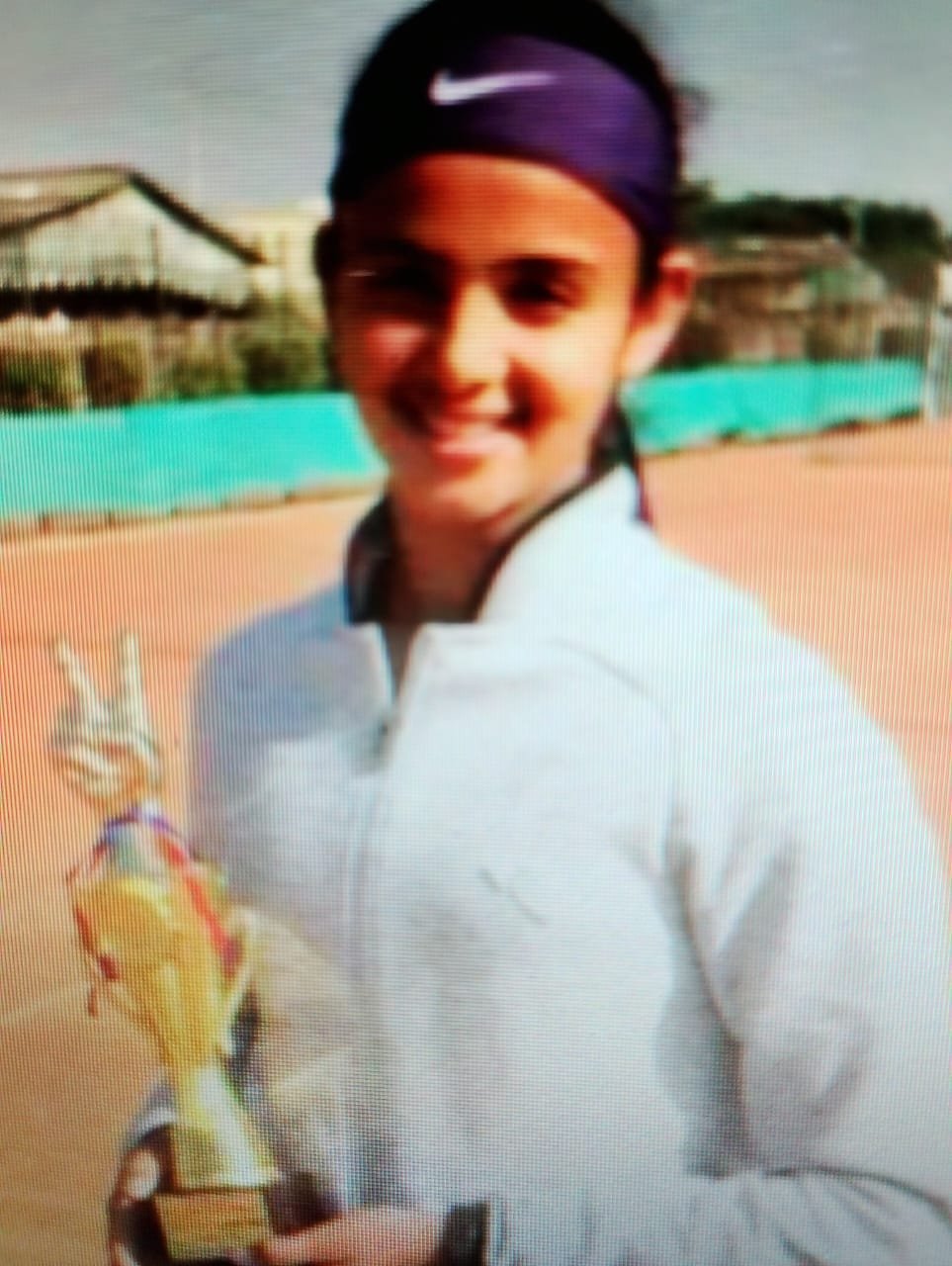
Contents
Gurugram | July 11, 2025
In a deeply disturbing incident that has sent shockwaves across Gurugram, 21-year-old national tennis player Radhika Yadav was shot dead in her own home on Sunday morning. The most heartbreaking detail? The shooter was none other than her own father.
Radhika, who had made a mark at the national level in the past two years and had recently been selected for an international tournament, was the pride of her neighborhood. But her promising journey was cut short not by a stranger, but by someone who was supposed to protect her — her father, Ravindra Yadav.
What led to the tragic shooting?
According to initial police reports, Ravindra Yadav confessed during interrogation that he shot Radhika “in a fit of rage.” Investigators reveal that Radhika was passionate about her tennis career and was preparing to travel abroad for further training and competitions — a plan that reportedly didn’t sit well with her father.
Sources close to the family say Ravindra had always been a strict and conservative man. He was uncomfortable with Radhika’s growing independence and career choices. Tensions had been simmering within the household for months. On Saturday night, a heated argument broke out, and by morning, the unthinkable had happened.
Community in shock
The neighborhood is still reeling from the tragedy. Neighbors describe Radhika as a humble, focused, and highly disciplined young woman.
“She would be out for practice every morning by 5 AM. That kind of dedication is rare these days,” said one neighbor, struggling to hold back tears.
Father arrested on the spot
Police arrested Ravindra Yadav at the scene. He has been charged with murder under relevant sections of the IPC. Radhika’s mother, who was reportedly present in the house during the incident, is in deep shock and under medical observation.
A nation reflects: Are dreams still a crime for daughters?
Radhika’s brutal murder has sparked widespread outrage and grief. It has reignited an uncomfortable question — are daughters still being punished for dreaming big?
When a father turns into the very obstacle his daughter must overcome, it’s a mirror held up to our society.
Latest News
Swiss Accounts, Conversion Racket, and Trapped Innocents — This Wasn’t a Saint, He Was a Predator
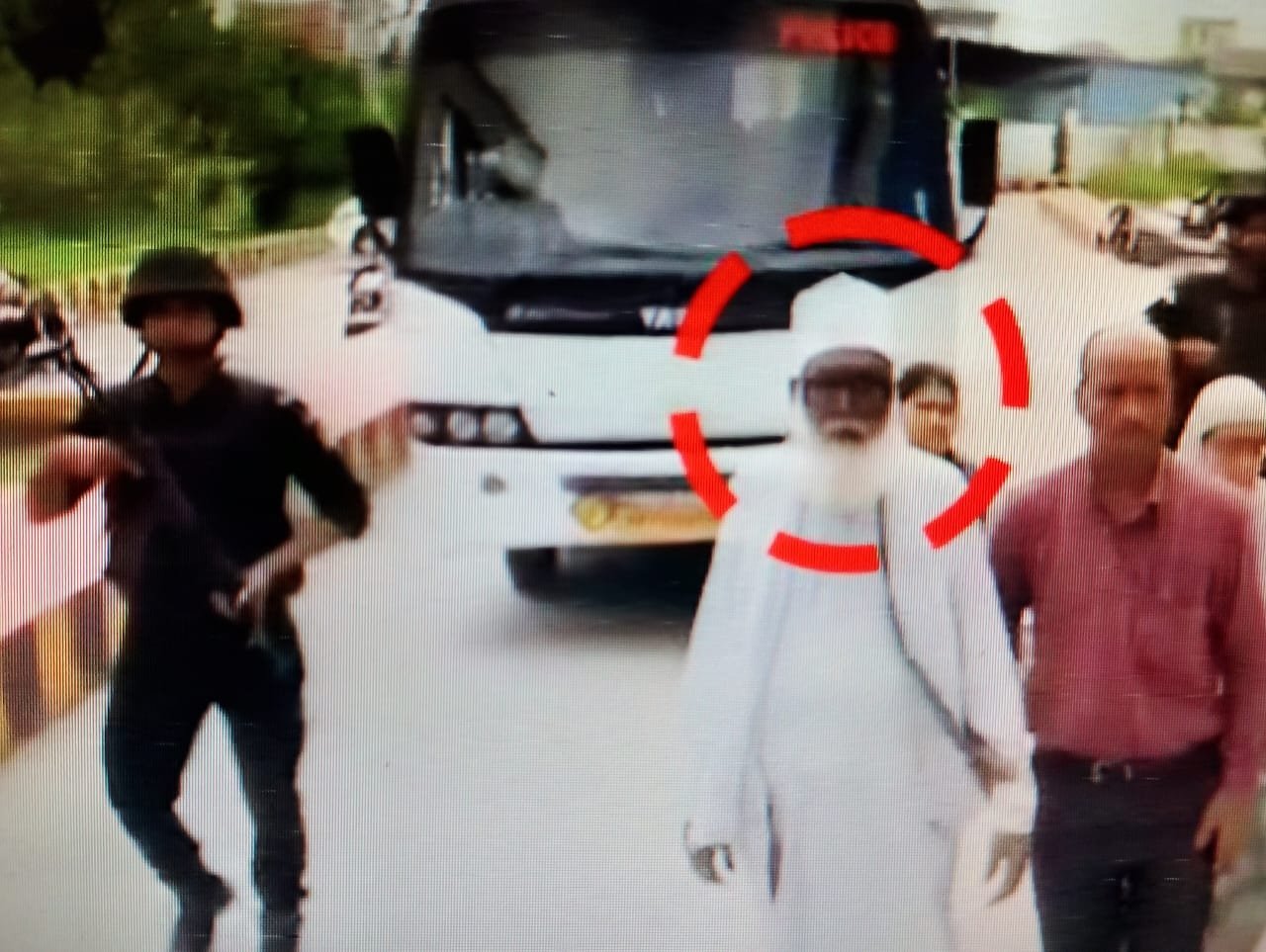
Contents
Uttar Pradesh | 11 July 2025
By Credent TV News Desk
He walked with a staff, wore a long beard, and people in the village folded their hands in reverence at his feet. But behind that saintly image was a man running one of the darkest religious conversion syndicates India has ever seen. His name: Changur Baba. Real name: Jalaluddin. Age: 70. And his list of crimes? Long enough to outlive his age.
A Full-Fledged Conversion Industry
Recent investigations by Uttar Pradesh STF and ATS have uncovered a deeply disturbing reality. This so-called baba wasn’t just chanting prayers — he was masterminding an elaborate system of trapping women and girls into forced religious conversions.
His targets? Minor girls, widows, and poor women — the most vulnerable in society.
His method? Manipulation, emotional blackmail, fake promises of marriage, and when that didn’t work — threats and money.
What’s even more shocking — Baba had a conversion training manual. A complete system of how to trap girls from different religions: what to say, when to act affectionate, and when to threaten.
Fixed rates were decided for each conversion. This wasn’t faith — it was business.
Crores in Swiss Bank Accounts
If you thought this racket was operating on a small scale, think again. Investigators discovered over 40 bank accounts linked to Changur Baba, including several in Switzerland. The total transactions? A staggering ₹106 crore (over $12 million).
Where did the money come from? Sharjah, Dubai, and other Islamic countries, according to the STF.
This was not just a religious racket — it was internationally funded and systematically operated.
Arrested — But the Net Is Wider
On 5th July, STF arrested Changur Baba along with his close aide, Neetu alias Nasreen, from a hotel in Lucknow. During interrogation, it was revealed that the network stretched far — from Mumbai to Dubai.
Now, the Enforcement Directorate (ED) has joined the investigation. A money laundering probe is underway, and authorities are preparing to seize assets and properties linked to the illegal trust and conversions.
A Saint No More
Changur Baba may be behind bars now, but the emotional scars he left on thousands of innocent women can’t be counted in case files or spreadsheets.
He exploited faith to deceive, used trust to destroy, and wore religion as a mask for crime.
As one STF officer said:
“He wasn’t a saint in White. He was a predator in disguise.”
The villagers who once bowed before him now raise questions. How did this go on for so long? And how many more like him are out there?
There’s an old saying:
“When fake saints rise, truth becomes the biggest casualty.”
But this time, the law has spoken. And Baba’s mask has finally fallen.

 Education1 month ago
Education1 month agoKota ICICI Bank Staffer Swindles ₹4.5 Crore, Gambles It All on Stock Market

 Education2 weeks ago
Education2 weeks ago11 Powerful Reasons Why DAV International Yoga Day Jaipur Uplifted Spirits!

 Bollywood1 month ago
Bollywood1 month agoHousefull 5 Movie Review: Akshay Kumar, Riteish Deshmukh Bring Laughter and Twists in Bollywood’s Biggest Comedy Franchise

 Cricket1 month ago
Cricket1 month agoBengaluru Chinnaswamy Stadium Stampede: 11 Dead, 33 Injured in RCB Victory Parade Chaos

 Education2 weeks ago
Education2 weeks ago7 Inspiring Highlights of DAV Foundation Day Jaipur Celebration – Amazing Vedic Legacy Revealed!

 Education2 weeks ago
Education2 weeks agoEmpowering Educators: A Three-Day Learning Journey at DAV Centenary Public School, Jaipur

 Credent TV2 weeks ago
Credent TV2 weeks agoVIBGYOR Summer Camp Ends on a High at DAV Centenary Public School, Jaipur

 Election4 days ago
Election4 days agoDAV Centenary Public School, Vaishali Nagar, Jaipur Event Report: Talent Hunt Show




































